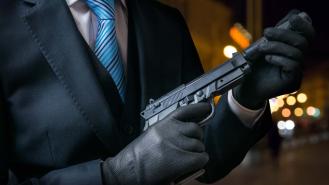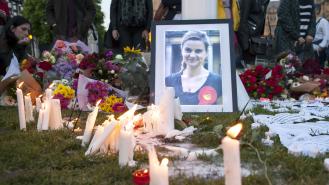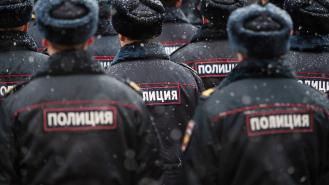
Death in a teacup: The poisoning of Alexander Litvinenko
He was a former Russian spy who was poisoned with polonium in a London hotel via a cup of tea.
The murder of Alexander Litvinenko in 2006 caused huge reverberations, an international scandal and a health emergency in the city on a giant scale.
It took years for a public inquiry into Litvinenko’s murder to be completed, but the man himself offered clues about potential culprits on his deathbed. However, the investigation, as it transpired, was a lot more complex.
The poisoning
A former spy turned whistle-blower who escaped to the UK in 2000, Alexander Litvinenko was a critic of Vladamir Putin and secretly worked with MI6. He was looking into the murder of a Russian journalist when he himself was murdered.
On 1st November 2006, Litvinenko met with two men, former KGB agents Andrei Lugovoi and Dmitry Kovtun, at the Millennium Hotel in London. Late that night, he fell ill and was hospitalised.
It initially looked like a case of acute food poisoning, but the symptoms didn’t lessen when they should have. In fact, they got worse and Litvinenko’s hair started falling out.
The signs pointed to radiation poisoning, but he wasn’t radioactive. He was treated for thallium poisoning, but the symptoms didn’t match, either.
Finally, urine tests indicated he had been poisoned with polonium, a radioactive material that is a highly effective poison when ingested, but is very hard to test for when inside the human body. While most radioactivity tests look for gamma radiation, polonium emits alpha radiation.
What’s more, because it only emits a short range of radiation, it doesn't pass through substances like skin or paper, making it an easy substance to smuggle into a country as it can’t be detected through normal airport scans.
On 23rd November, Litvinenko died. On his deathbed, he pointed the finger at Russia and Vladimir Putin.
The investigation
Following Litvinenko’s death, the investigation into his poisoning began. Police scanned hours of CCTV footage to see where Litvinenko had been prior to his death and who he had met with.
Nine police officers travelled to Russia to continue the investigation, but Russia’s prosecutor general Yuri Chaika announced that no suspects would be extradited. He also informed British officers that they wouldn’t be able to arrest anyone on Russian soil.
In early December, the Metropolitan police officially declared it a murder case. Interpol became involved and started working with the British, Russians and Germans. Experts were also called in to start testing for radiation.
Following the radiation
It was the radiation trail that ultimately led police to answers. Before he died, Litvinenko detailed to police his movements that led up to his poisoning.
It turns out, the trail didn’t begin on the day Litvinenko was fatally poisoned, but weeks earlier, on 16th October, when he had first met with Lugovoi and Kovtun. This also meant that the fatal attack on his life wasn’t the first attempt. In fact, there were two attempts before the final poisoning in November.
Huge amounts of radiation were found at the site of the three men’s first meeting, back in October. Traces of polonium were also found in an Itsu restaurant they had all visited after.
A second meeting happened between Lugovoi and Litvinenko days later. This time, it didn’t appear as if Lugovoi had attempted to poison Litvinenko.
However, large traces were found at the hotel and at the Pine Bar, where Litvinenko met Lugovoi and Kovtun on the fateful day. Radiation was detetced on the teapot that was used to serve tea to Litvinenko. Even the bar staff tested positive for low levels of polonium.
Litvinenko’s house was tested and his wife, Marina, tested positive for polonium, but only trace amounts that meant she was safe from the poison.
In the end, more than 40 sites were found to contain traces of polonium, including the London Underground (information that was kept from the public, for fear of causing alarm) and three different aircraft that the suspects had travelled on.
The suspects
The poison trails implicated Lugovoi and Kovtun, who became the prime suspects in Litvinenko’s murder. At first, they alleged that Litvinenko had attempted to poison them during their first meeting, the location of which was said to be ‘heaving’ with contamination. But the trail of radiation didn’t support their claims.
A shisha pipe Lugovoi had smoked later that day clearly showed alpha radiation. Heavy radiation was found in both hotel rooms the two men had stayed in. A club they visited in Soho showed the same.
The trail then led to Lugovoi’s room, specifically, the bathroom, where it appeared he had disposed of the polonium down the sink. Police were able to determine this thanks to the massive contamination readings.
By contrast, the bus Litvinenko had travelled on to the meeting didn’t show any radiation.
Although he didn’t appear to attempt to poison Litvinenko during their second meeting, once again, there was a trail of radiation that followed Lugovoi’s movements. The hotel room he stayed at showed heavy contamination and once again, the trail suggested the polonium had been disposed of down the bathroom sink. This time, there were signs of a spill that had been mopped up with towels.
The same went for toilets in the Millennium Hotel the three men met at when Litvinenko was poisoned, which both suspects had been caught on CCTV entering.
The inquiry
In 2016, an inquiry was launched into the murder, which took place over 17 months. It found that Lugovoi and Kovtun were responsible for the poisoning. It also found it was state-sponsored and ‘probably’ supported by Putin. However, attempts to extradite the suspects failed.
So, what happened to Litvinenko’s killers? Kovtun died in 2022 from Covid, in Moscow. Lugovoi, meanwhile, was awarded a state honour by Putin in 2015, for ‘services to the motherland’—something declared a provocation by the inquiry.








